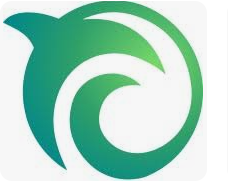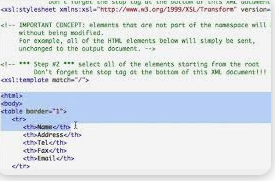Forex trading platforms are essential tools for traders looking to engage in the foreign exchange market. These platforms facilitate the buying and selling of currencies, providing traders with the necessary tools to analyze market trends, execute trades, and manage their portfolios efficiently. With the increasing popularity of online trading, choosing the right forex trading platform has become crucial for both novice and experienced traders. A reliable platform can significantly impact trading performance by offering features such as real-time data, advanced charting tools, and automated trading capabilities. In this guide, we will explore the key aspects of forex trading platforms, helping you understand how to choose the best one for your trading needs.
How to Choose the Best Forex Trading Platform
Choosing the best forex trading platform is a critical step for any trader, as it can significantly impact your trading success. Here are some key factors to consider when selecting a platform:
1. Define Your Trading Goals and Style
Before diving into the selection process, it is essential to identify your trading goals and style. Are you a day trader who prefers short-term trades, or do you focus on long-term positions? Do you rely more on technical analysis or fundamental analysis? Answering these questions will help narrow down your options, as some platforms are better suited for specific trading strategies. For instance, if you are a technical trader, you might prefer a platform with advanced charting capabilities and a wide range of technical indicators.
2. Evaluate User-Friendliness
User-friendliness is crucial when choosing a forex trading platform. A platform with a clean and intuitive interface can save you time and reduce frustration, making it easier to execute trades and access essential features. Look for platforms that offer customizable layouts and allow for seamless navigation between different sections. Additionally, consider the availability of mobile trading apps, as they provide the flexibility to trade on the go. A user-friendly platform is especially important for beginners who are still learning the ropes of forex trading.
3. Assess Trading Tools and Features
The best forex trading platforms offer a comprehensive range of tools and features to enhance your trading experience. These may include real-time market data, economic calendars, news feeds, technical analysis tools, and risk management features. Take the time to explore the available tools and determine if they align with your trading strategy. For example, if you rely heavily on economic news, a platform with a robust economic calendar and news feed would be beneficial. Additionally, ensure that the platform supports various order types, such as market orders, limit orders, and stop-loss orders, to give you flexibility in managing your trades.
By considering these factors, you can select a forex trading platform that meets your needs and supports your trading strategy effectively.
What Are the Top Forex Trading Platforms for 2024?
Choosing the right forex trading platform can make a significant difference in your trading performance. Here are some of the top forex trading platforms for 2024, each with its unique strengths:
1. MetaTrader 4 and MetaTrader 5
MetaTrader 4 (MT4) and MetaTrader 5 (MT5) are among the most popular trading platforms in the forex market. They are known for their comprehensive array of technical indicators, advanced charting tools, and automated trading capabilities through Expert Advisors (EAs). MT4 is favored by many traders for its simplicity and effectiveness, while MT5 offers additional features such as more timeframes, an economic calendar, and advanced order types. Both platforms are supported by a large community, providing a wealth of resources and tutorials for traders of all levels.
2. cTrader
cTrader is another highly regarded forex trading platform, known for its user-friendly interface and powerful trading tools. It offers a seamless and engaging trading experience with features like one-click trading, advanced charting, and algorithmic trading capabilities. cTrader is designed to cater to both beginner and experienced traders, providing a comprehensive set of tools to analyze the markets and execute trades efficiently.
3. TradingView
TradingView is a web-based platform that has gained popularity for its excellent charting abilities and social trading features. It offers a wide range of technical analysis tools, customizable charts, and the ability to share and follow trading ideas within the community. TradingView is particularly useful for traders who value collaboration and community insights, making it a great platform for learning and improving trading strategies .
These platforms are highly recommended due to their robust features, user-friendly interfaces, and strong support from the trading community. Choosing the right platform depends on your specific needs and trading style, so it is essential to evaluate each option carefully.
How Do Forex Trading Platforms Compare?
When comparing forex trading platforms, several key factors should be considered to ensure you choose the one that best suits your needs:
1. Regulatory Compliance and Security
One of the most critical aspects of any trading platform is its regulatory status. Ensure that the platform you choose is regulated by reputable financial authorities, such as the National Futures Association (NFA) in the U.S., the Financial Conduct Authority (FCA) in the UK, or other equivalent bodies. Regulated platforms provide a higher level of security and protection for your funds, reducing the risk of fraud or malpractice.
2. Trading Costs and Fees
Different platforms have varying fee structures, including spreads, commissions, and other trading costs. Some platforms offer zero spreads but charge a commission per trade, while others include the costs within the spread. It is crucial to understand the fee structure and choose a platform that offers competitive pricing without hidden fees. Additionally, consider any additional costs such as withdrawal fees, inactivity fees, and overnight financing charges.
3. Customer Support and Educational Resources
Effective customer support is essential for resolving issues promptly and ensuring a smooth trading experience. Look for platforms that offer multiple support channels, such as live chat, phone support, and email. Test their response times and the quality of their assistance. Furthermore, platforms that provide extensive educational resources, including tutorials, webinars, and demo accounts, can be invaluable for both novice and experienced traders looking to improve their skills .
What Are the Key Features of a Good Forex Trading Platform?
Choosing a forex trading platform involves evaluating several key features to ensure it meets your trading needs. Here are some of the essential features to consider:
1. User Interface and Navigation
A user-friendly interface is crucial for a smooth trading experience. Look for a platform that offers a clean and intuitive design, making it easy to navigate through different sections. Customizable workspaces can be beneficial as they allow you to arrange charts, indicators, and other tools according to your preferences, enhancing your overall efficiency.
2. Charting Tools and Analysis
Robust charting tools and analysis capabilities are fundamental for forex traders. A good trading platform should provide various chart types, timeframes, and drawing tools. Additionally, it should offer a wide range of technical indicators, such as moving averages, Fibonacci retracements, and trend lines. Advanced features like backtesting and pattern recognition can further aid in making informed trading decisions.
3. Order Types and Execution
Efficient order execution is vital in forex trading to minimize slippage and ensure trades are executed at desired prices. A reliable trading platform should support multiple order types, including market orders, limit orders, stop orders, and trailing stops. Features like one-click trading and fast execution speeds are also important to provide a seamless trading experience.
By focusing on these features, you can select a forex trading platform that enhances your trading efficiency and supports your strategy effectively.
What Are the Pros and Cons of Popular Forex Trading Platforms?
Understanding the strengths and weaknesses of popular forex trading platforms can help you make an informed choice. Here are some insights into the pros and cons of widely used platforms:
1. MetaTrader 4 (MT4)
Pros:
- User-friendly interface and widely supported by brokers.
- Extensive range of technical indicators and charting tools.
- Supports automated trading through Expert Advisors (EAs).
Cons:
- Limited to forex and CFDs; fewer asset classes compared to MT5.
- Older platform with fewer updates and features compared to newer platforms.
2. MetaTrader 5 (MT5)
Pros:
- Advanced charting tools and additional asset classes, including stocks and commodities.
- Built-in economic calendar and depth of market (DOM).
- Supports more order types and backtesting capabilities.
Cons:
- Steeper learning curve compared to MT4.
- Not all brokers support MT5.
3. cTrader
Pros:
- Advanced charting capabilities and fast order execution.
- Provides depth of market (DOM) information.
- Supports algorithmic trading through cAlgo.
Cons:
- Varying fees depending on the broker.
- Less widespread adoption compared to MT4 and MT5.
By weighing these pros and cons, you can choose a platform that aligns with your trading style and requirements.
How to Evaluate the Security of a Forex Trading Platform?
Security is a paramount consideration when choosing a forex trading platform. Here are key factors to evaluate:
1. Regulatory Compliance
Ensure the platform is regulated by reputable financial authorities such as the National Futures Association (NFA) in the U.S., the Financial Conduct Authority (FCA) in the UK, or similar bodies. Regulation provides a level of protection for your funds and ensures the platform adheres to industry standards.
2. Data Encryption and Protection
A secure trading platform should employ robust data encryption protocols to protect your personal and financial information. Look for platforms that use SSL encryption and other security measures to safeguard your data from cyber threats.
3. Account Protection Features
Features like two-factor authentication (2FA) can add an extra layer of security to your trading account. Additionally, platforms that offer negative balance protection ensure that you do not lose more money than you have deposited, providing a safety net in volatile markets.
Top of Form
Bottom of Form
How to Evaluate the Security of a Forex Trading Platform
Ensuring the security of your forex trading platform is crucial for protecting your funds and personal information. Here are key factors to consider when evaluating the security of a forex trading platform:
1. Regulation and Licensing
The first step in assessing the security of a forex trading platform is to check if it is regulated and licensed by reputable financial authorities. Regulatory bodies such as the Financial Conduct Authority (FCA) in the UK, the Commodity Futures Trading Commission (CFTC) in the US, and the Australian Securities and Investments Commission (ASIC) impose strict guidelines to ensure the safety of traders’ funds. A regulated platform adheres to financial rules and standards, providing an added layer of security.
2. Encryption and Data Protection
A robust trading platform should employ advanced encryption techniques to safeguard your personal and financial information. Look for platforms that use Secure Socket Layer (SSL) or Transport Layer Security (TLS) encryption. These protocols ensure that data transmitted between your device and the platform’s servers is encrypted, making it difficult for hackers to intercept and decipher the information. Additionally, the platform should have strict data protection policies to prevent unauthorized access.
3. Two-Factor Authentication (2FA)
Two-factor authentication (2FA) adds an extra layer of security to your trading account by requiring two forms of identification to log in, such as a password and a unique code sent to your mobile device. This feature significantly reduces the risk of unauthorized access, even if your password is compromised.
What Are the Costs Associated with Forex Trading Platforms?
Understanding the costs associated with forex trading platforms is essential for managing your trading expenses effectively. Here are some common costs to consider:
1. Spreads and Commissions
Forex trading platforms typically make money through spreads, which is the difference between the bid and ask prices of a currency pair. Some platforms also charge commissions on each trade. It’s important to compare the spreads and commissions across different platforms to find the most cost-effective option. Some platforms offer tight spreads with low or no commissions, while others might have higher spreads but no additional fees.
2. Swap Rates and Overnight Fees
Swap rates, also known as overnight or rollover fees, are charged when a position is held open overnight. These rates vary depending on the currency pair and the direction of the trade. It’s important to be aware of these fees, especially if you plan to hold positions for more than one day. Some brokers provide calculators to help you estimate the swap rates for your trades.
3. Inactivity and Withdrawal Fees
Some trading platforms charge fees for account inactivity or withdrawals. Inactivity fees are applied when there are no trades or other account activities for a specified period. Withdrawal fees can vary depending on the method used (e.g., bank transfer, credit card, e-wallet). It’s crucial to understand these potential charges to avoid unexpected costs. Always check the broker’s fee schedule for a comprehensive overview of all applicable fees.
How Do Mobile Trading Apps Compare to Web Platforms?
Mobile trading apps have become increasingly popular, offering traders the flexibility to manage their accounts on the go. Here’s how they compare to traditional web platforms:
1. Convenience and Accessibility
Mobile trading apps provide the convenience of accessing your trading account from anywhere at any time. This is particularly beneficial for traders who need to monitor the markets and execute trades while away from their desks. Most major trading platforms, such as MetaTrader 4 (MT4), MetaTrader 5 (MT5), and cTrader, offer robust mobile versions with a range of functionalities similar to their web counterparts.
2. Functionality and Features
While mobile apps are highly convenient, they may not offer the full range of features available on web platforms. For example, advanced charting tools, multiple timeframes, and extensive technical indicators might be more limited on mobile devices. However, many mobile apps are continuously improving, providing features like real-time quotes, news feeds, and basic charting tools to support effective trading decisions on the go.
3. User Experience
The user experience on mobile apps is designed to be intuitive and user-friendly, making it easy to navigate and execute trades quickly. However, the smaller screen size can be a limitation for detailed analysis and multi-chart monitoring. Web platforms generally offer a more comprehensive trading environment with larger displays, customizable workspaces, and advanced analytical tools
Conclusion
Choosing the right forex trading platform is a critical decision that can significantly impact your trading success. By understanding and evaluating the key features and security measures of various platforms, traders can ensure they select a platform that aligns with their needs and offers a safe trading environment. Here are the key takeaways:
1. Security: Ensure the platform is regulated by reputable financial authorities and employs advanced encryption techniques and two-factor authentication to protect your funds and personal information. Security features such as account segregation and robust AML and KYC procedures further enhance the platform’s reliabilit.
2. Costs: Be aware of the costs associated with forex trading platforms, including spreads, commissions, swap rates, and inactivity fees. Comparing these costs across different platforms can help you find the most cost-effective option for your trading strategy.
3. Functionality: Evaluate the functionality and features of both web platforms and mobile trading apps. While web platforms often provide a more comprehensive trading environment with advanced tools and larger displays, mobile apps offer the convenience of trading on the go, making them a valuable addition for active tradersconsidering these factors, traders can select a forex trading platform that not only meets their trading requirements but also ensures the security and cost-efficiency necessary for successful trading. Conduct thorough research, utilize demo accounts to test different platforms, and prioritize platforms that offer robust customer support to assist you throughout your trading journey.
In conclusion, a well-chosen forex trading platform can provide the foundation for a profitable and secure trading experience. By focusing on regulation, security features, costs, and functionality, traders can make informed decisions that align with their trading goals and enhance their overall trading performance.
LinkedIn Description
🔍 Unlock the Secrets to Successful Forex Trading 📈
Discover the comprehensive guide to choosing the best Forex trading platforms tailored to your needs. Our latest blog dives deep into evaluating key features, security measures, and costs to ensure you make informed decisions. Perfect for traders at any level, from beginners to seasoned pros.
📊 Key Insights Include:
- Evaluating platform security
- Understanding costs and fees
- Comparing web platforms and mobile apps
Stay ahead in the trading game by choosing the right tools. Dive into our expert analysis and take your trading strategy to the next level. 🌟
#ForexTrading #TradingPlatform #Investment #ForexMarket #TradingTips #Finance #SecureTrading #FinancialFreedom
Facebook Description
🌟 Master Forex Trading with the Right Platform! 📊
Are you ready to elevate your Forex trading game? Our latest blog is here to guide you through choosing the best trading platform tailored to your needs. From evaluating security measures to understanding trading costs and comparing mobile vs. web platforms, we cover it all!
🔑 Highlights:
- Ensuring platform security 🔒
- Breaking down costs and fees 💰
- Comparing mobile apps and web platforms 📱💻
Join the community of informed traders and make the smartest choices for your trading journey. Read now and trade confidently! 🚀
#ForexTrading #TradingPlatform #SecureTrading #FinancialTips #InvestSmart #ForexMarket #Finance #TradingSuccess
Instagram Description
🌐✨ Elevate Your Forex Trading Experience! 📈💹
Choosing the right Forex trading platform is crucial for success. Our latest blog breaks down everything you need to know about platform security, costs, and functionality. Perfect for both newbies and seasoned traders!
🔒 Security | 💰 Costs | 📱💻 Mobile vs. Web Get the insights you need to trade confidently and efficiently. Click the link in our bio to learn more! 👆
#ForexTrading #TradingPlatform #SecureTrading #InvestmentTips #FinanceGoals #TradingCommunity #ForexMarket #TradeSmart
Feel free to adjust the descriptions to better fit the tone and audience of your specific social media pages!












